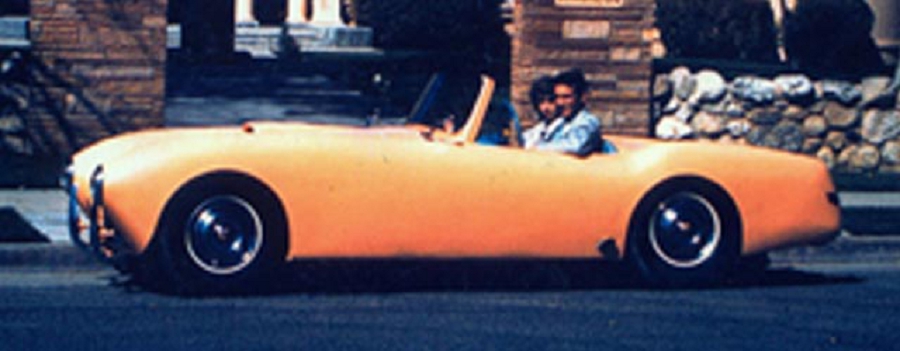
Hi Gang…
What a great name for a sports car – the Townsend Typhoon.
Frank Townsend built his first “Typhoon” in ’54 on a ’49 Plymouth chassis – 111 inch wheelbase and all. What a grand car it was to drive – and race too. But this wasn’t the end of the story – it was just the beginning.
The “Typhoon” series of cars span builds from ’54 thru the ‘70s – and beyond. Today’s story focuses on Frank’s Typhoon Mark I and Mark II cars. The bulk of effort spent researching the history of these cars goes to Owen Gibson – current owner of the Townsend Typhoon Mark II sports / race car.
I asked Owen if he could work with me to put a story about the history of Frank’s Townsent Typhoon cars here on Forgotten Fiberglass. Owen graciously said “yes” and today is the first story of several that we will feature reviewing the history of these cars.
With great thanks to Owen for making this possible, let’s check out out what he has to say about this fascinating history on a uniquely designed and hand-crafted sports car – the Townsend Typhoon.
The Search Begins – But What Do I Have?
During a 1999 trip over the Arivaca Valley in Southern Arizona, I spotted a field by the creek full of rusting cars. Having been a hot rodder and drag racer since the 60’s, I made a closer pass to just check out the field.
Below me were several dozen trucks, cars, tractors and motorcycles strewn across a field. A real rust lovers paradise as it appeared to be everything from very early Dodge Brothers trucks, several 2 door Rocket 88’s and the newest – a 1959 2 door Ford. As I looked about for a great street rod project I noticed a car with a tree growing thru the hood and no rust.
I knew I had to come back and get closer look. As it turned out, I have known the owners of the cars in this field all of my life, and I had known the non-rusty car as a terror to the local cowboys in the early 60’s. It just didn’t sink in until later.
The owner back then was Bud Marley. Bud was from a well know ranching family with west coast film connections and had acquired the chassis and body of the car in the ‘60s. When he got it, he pulled the Ford flathead from his race boat, installed it in this car, and raced it up and down the Nogales highway in front of the Cow Palace Bar/Restaurant.
Bud was well known for providing free beer for his friends and cowboys – thus more than one, half scared to death drunken cow poke returned from a harrowing experience with Bud at the helm of this car. Bud lost interest quickly and the car was relegated to the spot in the field where I saw it some 35 years later.
When I found it, the custom fiberglass car body was so badly delaminated that to move it I had to brace it inside and out with wood. The frame was rusted out and all usable parts were long gone. Knowing only that Bud had gotten the car in the late 50’s, I took pictures and set out to build a one-of-a-kind street rod – not knowing nor suspecting the racing history.
I was constantly showing the hulk to anyone who had been around the Arizona race scene in the 50’s – hoping to find out more information. After many months and ruling out several of the other polyester bodied designs from the 50’s, a friend of mine, Doug – a wealth of names and sources – suggested I speak with Steve Proctor. I gave Steve a collection of photos who in turn showed these to Jeff Gamble of Tucson.
Jeff was a SCCA buff who worked vintage SCCA, and when I spoke to Jeff he suggested I speak with Frank Townsend had built and raced cars around Tucson in the ‘50s. This was late 1999 and I was headed to the Copper Classic Vintage race at PIR. So I made plans to speak to Frank in the near future.
While helping a friend, Rob Url, who races a Morgan, I laid the car portfolio down to help put up the canopy. Rob looked at the cover and commented, “Where’d you find the Townsend Typhoon? I haven’t seen that car since 50’s.”
I said Frank Townsend from Tucson?
I had known Frank as a drag racer – nothing more. The next week I took the pictures and went to Townsend’s Speed and Motor works in Tucson. I asked to see “Frank” and the tall very quiet mid 60’s gentleman strolled over.
I told Frank that I might have recovered a car of his from the 50’s and his reply was “no they’re all long gone”. I pulled the pictures and watched as his recognition of the car slowly showed across his face. “Where’d you find it?” was the first comment.
Turned out he remembered selling his Townsend MK2 race car to a “cowboy in a dump truck” as they were finishing the Townsend MK3 Special of PCC championship fame in 1959. This was a car qualified by Donald Hulette – 1970’s movie director and raced by Pete Voedodsky. These cars are in Vintage American Road Racing Cars by Pace and Brinker.
Several years of searching and a ton of luck later here is the history as reconstructed from pictures, film and many lunches with Frank and Pete and friends.
Townsend Typhoons
The Townsend Typhoons were a series of cars over several years.
Each was the brainchild of Frank Townsend from Tucson, Arizona, and his team – friends and relatives alike. All the cars were used on the street at some time in their lives, but most were raced. Frank was in the local papers quite a bit back in the day. He had local ads for selling his fiberglass bodies (we’re still looking for these), and also had a hot rod and performance business with an emphasis on Corvettes.
Townsend Typhoon: Mark I – Car Number 1 (lost car):
The concept started as a wood model in the early 50’s while going to high school and driving a 49 Olds Rocket – three on the tree. In fact, Frank still has that wooden model.
This first Typhoon was developed and completed in Frank’s high school shop class (senior year) in the Fall of ’54. The team that completed this work included Frank Townsend, Robert Townsend (brother), Jack Voevodsky, Larry Randell, and Doug Mathern.
The Typhoon Mark I fiberglass mold and the first Typhoon body used hand-laid woven roving cloth and 55 gallons of marine polyester to complete the task. This body was set on a full-size (111” wheelbase) 49 Plymouth chassis with an Oldsmobile Rocket 303 cubic inch power plant. It used Hillman trim using a Hillman front grille and other pieces.
The first car was the only one with a modified frame – ’49 Oldsmobile. All subsequent cars use tube frame based on Kurtis design. This car was sold and then later wrecked in the late ‘50s. It no longer exists today.
Townsend Typhoon: Mark I – Car Number 2 (lost car):
The next Mark I (car #2) was laid up in the same mold as the first car – as soon as the wreck rebuilding business would support the project. This was red in color and had a 3 compartment tube frame. It was powered by Oldsmobile with upgrades to a Corvette windshield and other body modifications to increase strength. A Hillman front grille was also used.

Typhoon Car #2 is the Red Car In The Center of the Picture. Car #3 is the Purple Race Car At The Rear.
This car was Bob Townsend’s and it was street and road raced (NHRA and SCCA) while Bob was in the Army from ’57 to ‘59. Frank sold it to Ken – an Army friend. Ken took it to Seattle in late 59. Unfortunately the car was lost to a junk yard when Seattle was cleaning up for the ‘62 World’s Fair.
Townsend Typhoon: More Bodies
As the reputation of Frank and his Typhoon grew, they produced and sold two or three other Mark I bodies. These additional bodies remain unaccounted for as of today.
Townsend Typhoon: Mark II – Car Number 3 (exists today):
The Mark II Townsend Typhoon, the third Typhoon, was built by Frank, Butch McDaniel, Jack Voevodsky, Larry Randell, and friends. It raced in NHRA and SR B/M SCCA events. This car started with a Mark I body.
However, it became the “Typhoon Mark II” when Townsend changed the “Hillman” looking nose, made changes creating the long low wide oval opening in the front, and removed the sides of the car behind the front wheels. The car got wrecked drag racing and the body was repaired – leading to these modifications. This is the car that Owen discussed finding – with these modifications intact – at the beginning of this story.
The Mark II had a tube Kurtis Kraft type frame and was built for street and drag racing. It was built with an Olds dual quad engine with a side shift LaSalle 3 speed. When Jack got back from the Military in late ’55, he bought a new ‘56 Vette and started road racing / drag racing his modified Mark II Typhoon.
Later, the Mark II was modified using an AK Miller Olds stroker 403 cubic inch 3 duce engine with a Muncie T10. This is the Olds stroker engine I bought and run now. This engine was still in the back corner under stuff right where it was set in ‘58. This car was raced in ‘57 in Southern California and Arizona and street raced too.
Townsend Typhoon Mark II: Racing Begins In Earnest
The Townsend MKII was first blue and later changed to purple after a wreck, and called the Purple People Eater by the press and competitors. The car chassis was fabricated in ’55 – ‘56 based around a Kurtis Kraft 500 design.
The front axle was from a dual wheel assembly on a B29 wheel strut. This axle was upgraded to ‘55 Chevy IFS in 56. The rear suspension was changed to coil-over after the first race as the rough tracks made the car a real handful for Frank and Jack hard to drive – and harder for anyone else to pass with the Golden Rocket 88.
The Mark II was also shorter than the Townsend Typhoon Mark I bodies. The Mark I body was based on a unmodified ’49 Plymouth chassis which as 111” inches in length. The original mold was shortened to fit a 100” wheelbase, doors were cut and hinged and the bonnet was cut to allow only the air cleaners to protrude.
The front wheel well was opened in 1956 to allow air flow to escape and the grill area was reduced and ducted after the rear end broke and Jack took down a mesquite. Simulated headlights were molded into the body. During the last race in ’56. Mr. Bird (then a local Tucson SCCA official and newspaper writer) informed Frank that he couldn’t race again until he was 21 (the following year).
Larry Randell, and Jack (John) Voevodsky were the prime helpers on the Mark II. As they recall, Larry fell asleep the night they finished the wiring – this was hours before first race of the year! Frank had finished the body and went home to get a little sleep at 2 am on the day of the race. Returning later he found Larry sound asleep in the seat – tools still in hand.
Pete became more involved after returning from the Army. The Army recon pilot got involved in the driving of the cars, a ‘57 and ‘59 Vette and the #27, but always admitted he was a lawyer – not a mechanic or engineer. The Mark II Typhoon – mostly forgotten – had many changes, numbers, drivers and upgrades over the next 5 years from the early Olds drive train to 4 tube 3 compartment (Kurtis type) 4 link coil over axles, to Pontiac injection power – and more.
All the while, the metallic purple work horse provided much driving fun and improved the driving skill for the Townsend crew along with the racing background and some parts for the highly successful cars that followed.
The Townsend Typhoon Mark II saw events in California at Santa Barbara, Laguna Seca, New Mexico, El Paso and many other races from 1956 thru early 60. Records and pictures including 16mm footage – has been found of these races. Pete recounts the most memorable California trip to Santa Barbara /Laguna Seca, where after starting on the pole, he took out the race leader in June of 1959.
Today many of the people who had been involved with this hometown effort have passed away. Much of the early information had been lost by the time the original Townsend Typhoon body was recovered from a the Marley Ranch in southern Arizona.
Recently, Frank’s younger brother Bob discovered his ‘50s negatives, which helped us rebuild the chassis during restoration to ‘57 specifications. Larry Randell and Bob found several pictures of the Townsend as a “work in progress.” The shots shown here are of the first chassis that was seriously revamped after the 1955 races.
And the saga continues – today at vintage racing events across the Southwest America.
Owen Gibson
T2V Racing and Restoration
520-906-9845
www.T2Vracing.com
www.T2Vrestoration.com
Summary:
There’s so much history wrapped up in the cars and the man – Frank Townsend. Owen recently shared with me that Frank held NHRA records from ’60 thru the ‘80s. He was also an early Pro Stock racer, and ran the Winston West NASCAR back in the steel bumper days. Frank has some great car stories to share!
For those of you wishing to learn more about Frank Townsend and his cars, visit the link below from Tam’s Old Race Car Site:
http://www.tamsoldracecarsite.net/TownsendSpecialHome.html#TownsendHome
Thanks again to Owen Gibson for his repeated help in providing details and photographs for today’s article on the Townsend Typhoons – a great story which well represents the success one can achieve with a well-managed, designed, and executed plan. Here it’s clear how fiberglass helped Frank and his team realize their dream of a custom built car – one that could race and perform on the street in superb form.
But Frank Townsend was just getting started. In a future story here at Forgotten Fiberglass, we’ll discuss the Mark III bodies that Frank later designed for his race cars. These cars were no longer called “Typhoons” and were often referred to as “Townsend Specials” during race events. Keep your fiberglass eyes peeled for these future articles
Hope you enjoyed the story, and until next time…
Glass on gang…
Geoff

——————————————————————-
Click on the Images Below to View Larger Pictures
——————————————————————-
- Here’s The Mark II Chassis (Car 3). In the Background You Can See Typhoon Car #2.
- Typhoon Car #2 is the Red Car In The Center of the Picture. Car #3 is the Purple Race Car At The Rear.





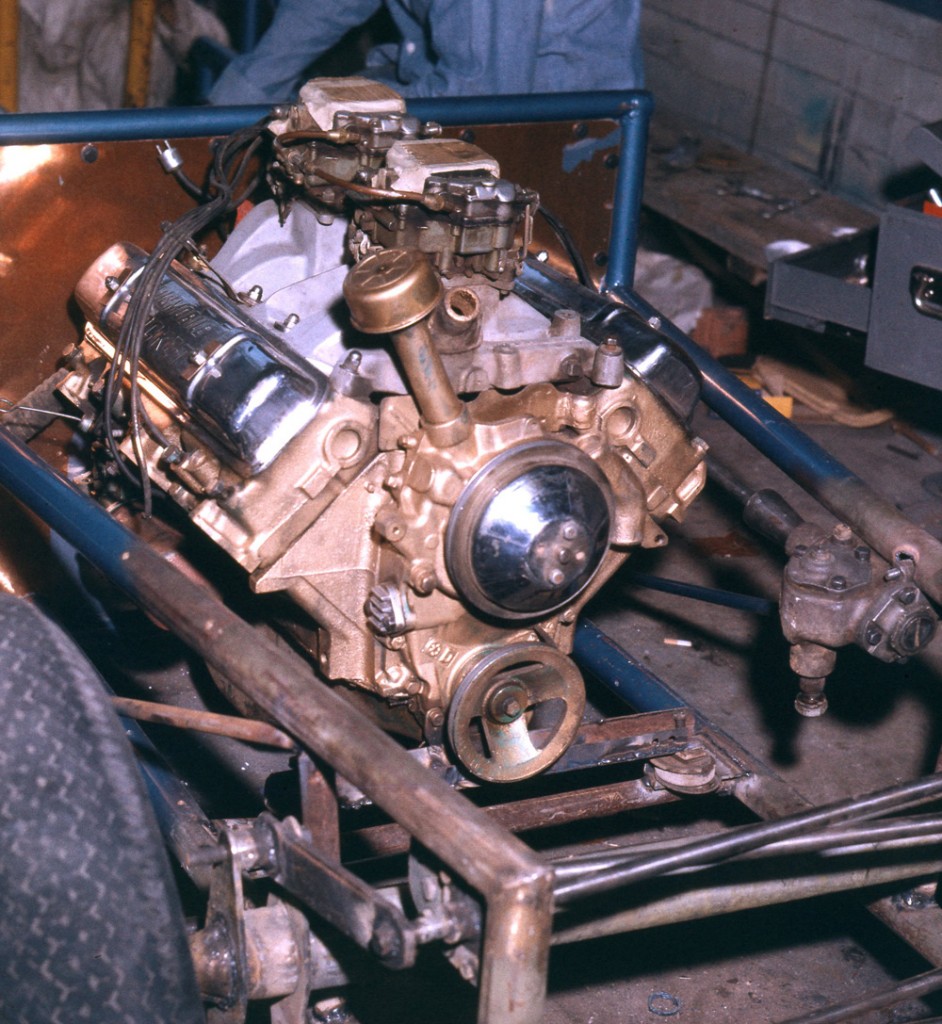
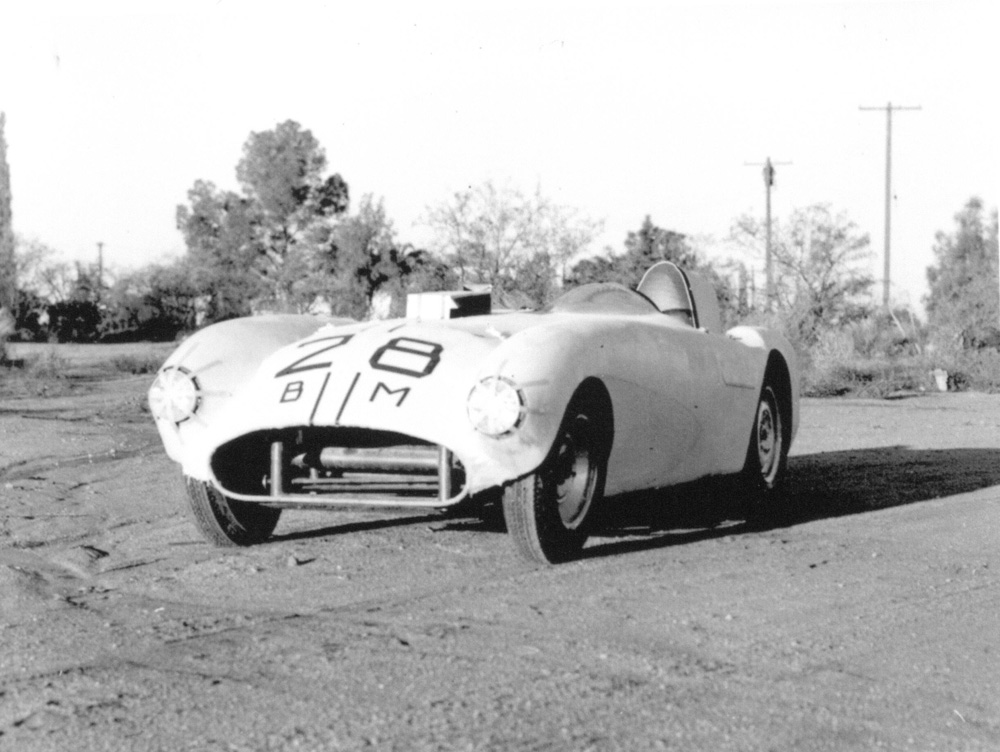
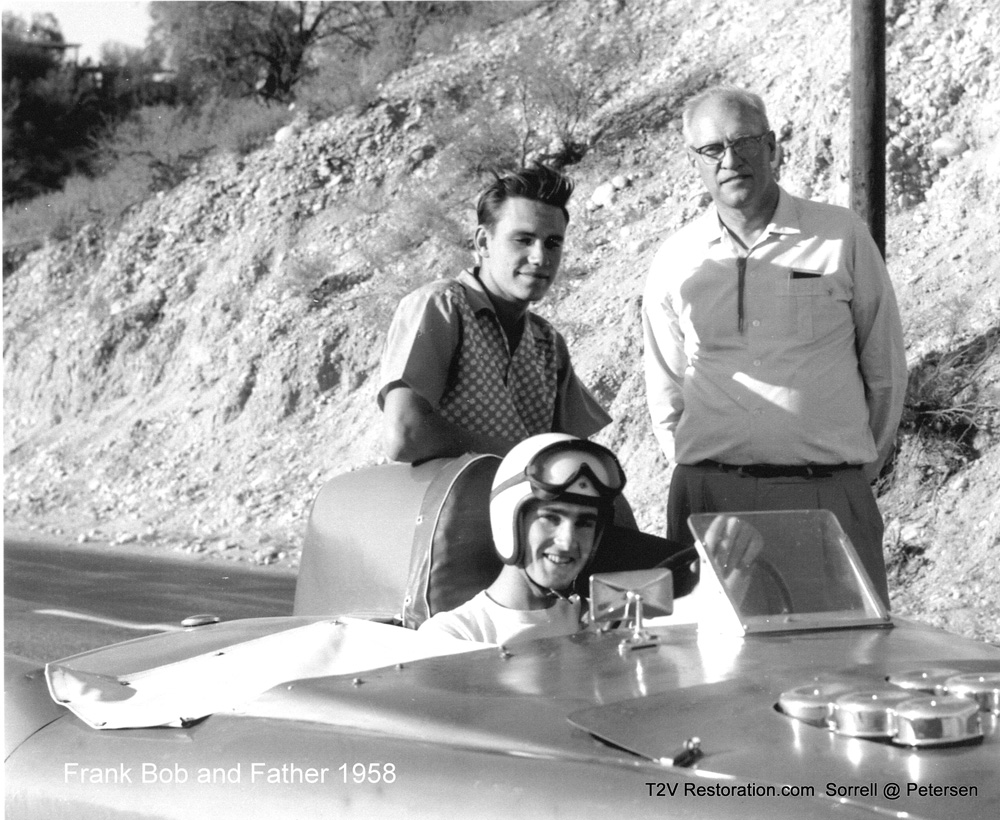




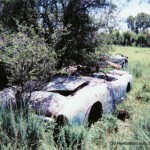
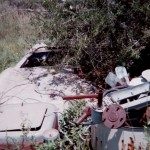
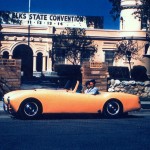
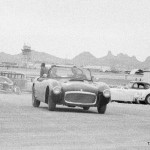
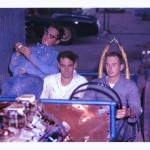
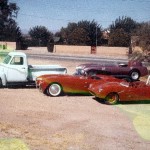
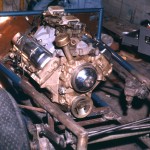
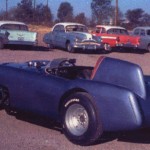
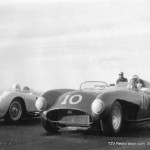
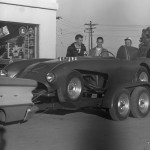
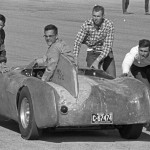
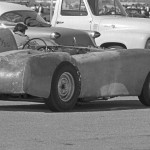
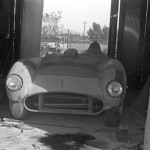
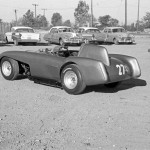
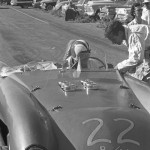
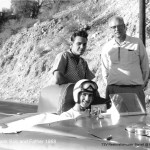
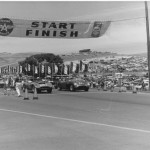
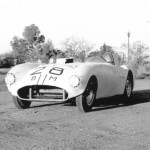
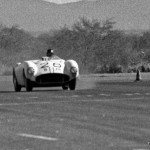
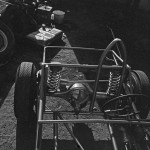
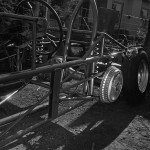
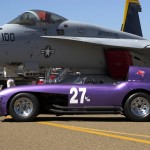
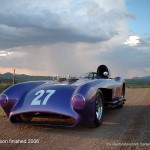
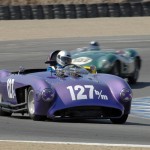
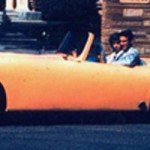
Frank Townsend had a severe stroke a while back ,he sold his raceworks and is currently reopened his old shop. He can be found at his frame and axle shop sometimes, He still has a large inventory of engines and other hot rod parts.
Really great to see the Townsend Typhoons here on Forgotten Fiberglass. Here’s a link to an article I wrote on the Typhoon Mk IV:
http://www.sportscardigest.com/townsend-typhoon-mk-iv-restoring-an-american-special/
The cars of Frank Townsend are quintessential historical assests to the American road racing community. They represent the way things used to be, when a back yard builder could constuct a car that was capable of running with the best cars from Europe. Owen Gibson has taken the mission on of restoring these cars for current and future generations to enjoy and deserves a big thumbs up for his outstanding efforts.